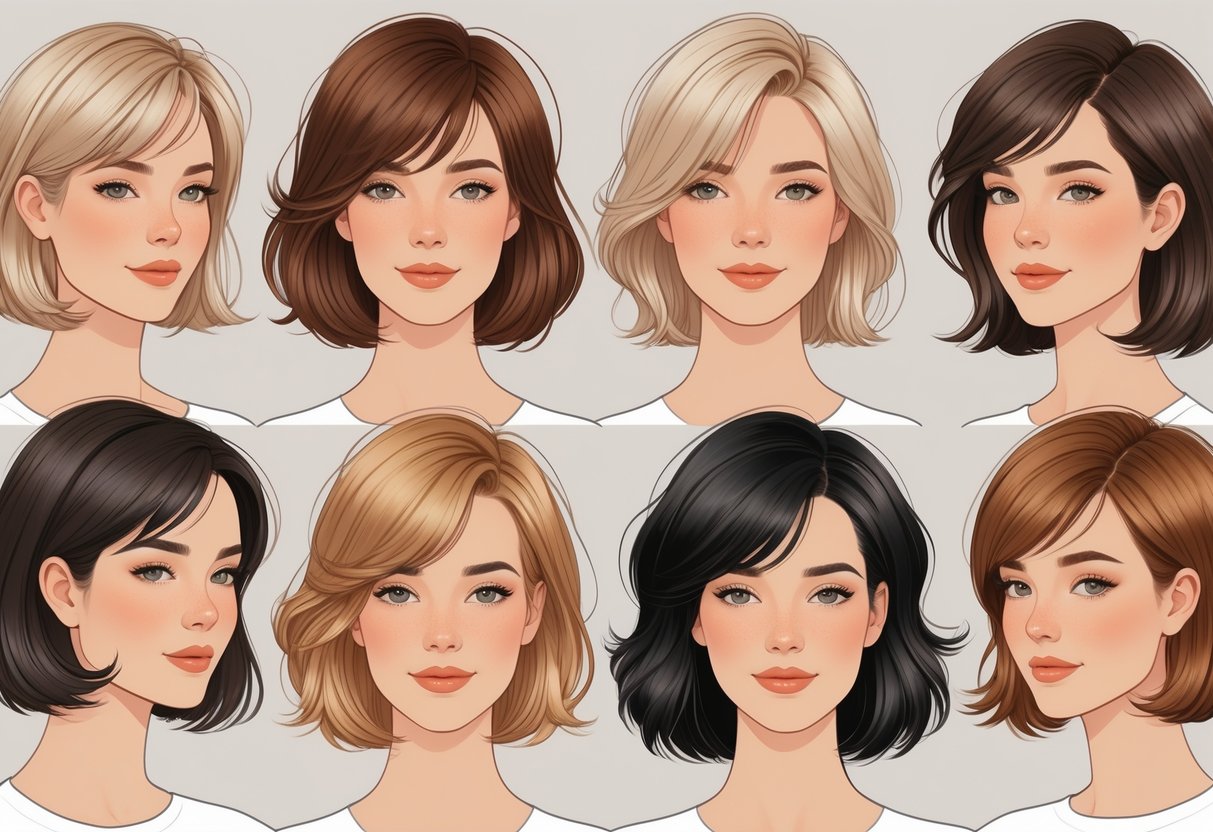
Face-framing haircuts are a proven way to instantly slim and flatter a variety of face shapes, making them a versatile choice for anyone looking to refresh their hairstyle. By incorporating well-placed layers or subtle angles around the face, these cuts can create the illusion of a more sculpted and balanced appearance.
Stylists often recommend face-framing layers for their ability to enhance natural features without requiring dramatic changes to hair length or texture.
There are countless styles to consider, from soft curtain bangs and long layered cuts to graduated lobs and textured shags. Strategic layering and thoughtful cutting techniques help blend the hair seamlessly with facial contours, resulting in a polished, modern look.
Many people choose face-framing hairstyles not only for their slimming effect but also for their adaptability across different hair types and preferences, as discussed in in this Hair.com article on ways to wear face-framing layers.
While some may opt for bold chops, others prefer more subtle layering that gently contours the face. Long hair, in particular, can have a slimming effect on most face shapes, as longer lengths draw the eye down and away from the widest points of the face, according to Byrdie’s guide on face-slimming hairstyles.
What Are Face-Framing Haircuts?
Face-framing haircuts use strategic cutting techniques to enhance and define features, creating a balanced and flattering shape. These styles are adaptable, work with many hair textures, and can instantly refresh and slim a person’s overall look.
Defining Face-Framing Layers
Face-framing layers are shorter sections of hair, precisely cut around the perimeter of the face while leaving the rest of the hair a longer length. The primary goal is to add softness, movement, and structure, drawing attention to the eyes, cheekbones, and jawline.
Stylists often use face-framing layers to create angles that blend seamlessly into the base haircut, whether it’s long, medium, or short. By customizing the length and placement, layers can suit straight, wavy, or curly textures, making them versatile for all hair types.
According to experts, these layers are also called angles because of how they contour and shape facial features, delivering a subtle yet noticeable transformation for most face shapes. For more in-depth ideas and visuals, see this guide to face-framing hairstyles with layers.
How Face-Framing Cuts Enhance Features
The visual effect of a face-framing haircut comes from the way the layers direct attention and add dimension. By introducing shorter pieces near the face, these cuts highlight natural bone structure, soften sharper lines, and create an illusion of slimmer, elongated features.
Face-framing layers work well for those wanting to balance out round, square, or heart-shaped faces. These angled cuts can minimize the width of the cheeks while emphasizing the eyes and lips.
Many stylists recommend face-framing layers because they offer customization. Shorter and more dramatic angles can add edge, while softer, longer layers provide a gentle transition from the face to the rest of the hair.
To see a range of stylish examples, explore these face-framing layers that look flattering on everyone.
Choosing the Perfect Face-Framing Haircut for Your Face Shape
Selecting the right face-framing haircut can create balance and highlight your features. Carefully chosen layers and shapes also help address concerns such as widening or slimming the face, adapting to individual hair texture and lifestyle.
Options for Round Faces
Round faces benefit from haircuts that create the illusion of length and reduce fullness on the cheeks. Long, layered cuts work well, especially when the shortest face-framing layer falls below the chin.
This draws the eye downward, making the face appear slimmer. Side-swept bangs and angled layers add length, while avoiding blunt cuts at the jaw helps prevent the face from looking wider.
Hair textures like wavy or straight both adapt well, but curls should be layered subtly to avoid extra width. Light, wispy layers or curtain bangs with a soft angle are flattering.
A face-framing haircut customized for round faces can be discussed at a salon by referencing celebrity or expert examples.
Flattering Styles for Oval and Square Faces
Oval faces are considered versatile, fitting almost any style. Layered cuts that start around the cheekbones or collarbone enhance balance and structure.
Face-framing layers can be subtle, and both blunt bangs or side parts work, depending on preference. Square faces benefit from soft, tapered layers, starting below the jaw to reduce angularity.
Side parts and curtain bangs help soften the strong jawline. Soft, layered waves or subtle curls further soften edges and create movement.
Blunt or heavy bangs should generally be avoided for square faces, as they can exaggerate width at the forehead or jaw. Medium and long lengths work especially well in both oval and square face shapes.
The right haircut can enhance or gently offset facial symmetry and bone structure.
Tips for Heart and Diamond Faces
Heart-shaped faces have a wider forehead and narrower chin. Soft, face-framing layers around the jaw and chin help balance proportions.
Side-swept bangs or curtain bangs can blend the forehead with the rest of the face, making the shape appear more harmonious. Diamond face shapes, which feature wide cheekbones and a narrow forehead and chin, benefit from layers that start near the cheekbones and extend downward.
Styles that add width at the jaw, such as bobs with chin-length layers, bring balance. Soft waves or curls can also minimize sharp angles.
People with either shape should avoid too much volume at the crown or tight, high ponytails, as these can exaggerate facial points. Expert advice and consultation in a salon will help identify the best personal option, particularly when adjusting for natural hair texture or density.



